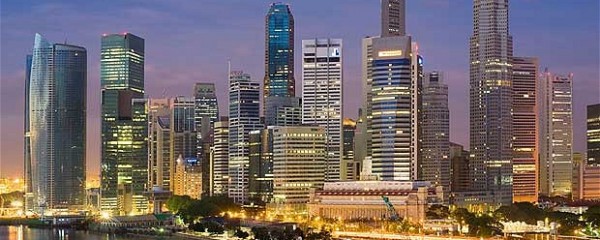11
Aug 2014
Trade between China and ASEAN grow
Trade between China and the ASEAN has been growing despite recent disputes in the South China Sea, economists say.
According to Chinese customs data published on Friday, trade between China and the Association of Southeast Asian Nations (ASEAN) rose 5.4 percent (in U.S. dollar terms) year-on-year to reach 261.3 billion U.S. dollars in the first seven months.
China’s exports to the ASEAN bloc grew 8.1 percent to 146.2 billion U.S. dollars in the first seven months, while imports amounted to 115.1 billion U.S. dollars, up 2.3 percent from a year earlier.
China has been ASEAN’s largest trading partner since 2009, and ASEAN has been China’s third largest trading partner since 2010.
Since 1995, trade between China and the ASEAN economies has grown an average of close to 20 percent a year. In 2013, two-way trade rose 10.9 percent to 444 billion U.S. dollars, significantly higher than the 54.8 billion U.S. dollars in 2002, Chinese customs figures showed.
Economists say there is still a lot of room to grow.
The ASEAN is a political and economic organization which was formed in 1967 by Indonesia, Malaysia, the Philippines, Singapore and Thailand. Membership has since expanded to include Brunei, Cambodia, Laos, Myanmar and Vietnam.
“China and ASEAN are a natural fit as trade partners. The links have strengthened in the last 20 years thanks to regional trade pacts, supply chain integration and rising incomes,” banking giant HSBC wrote in an extensive report sent to Xinhua on Wednesday.
The report, titled “What a globalizing China means for ASEAN”, is the latest in an HSBC series that looks at what a globalizing China means for various parts of the world. It is compiled by leading HSBC economists Herald van der Linde, Trinh Nguyen and chief China economist Qu Hongbin.
ASEAN’s trade with China represents 14 percent of its total trade, up from 3 percent from 1995. It is now greater than China’s trade volume between the U.S. and EU, according to the report.
Around 12 percent of ASEAN’s exports went to China in 2013, up from 6.5 percent in 2003. More than 16 percent of ASEAN’s imported goods came from China in 2013, up from less than 8.5 percent in 2003.
Since 2002, tariffs for more than 90 percent of goods in the ASEAN-China Free Trade Area have been reduced to almost zero.
This year, analysts worry disputes between China and some ASEAN nations — Vietnam and the Philippines — over the South China Sea could bring economic clouds to the tide of trade.
Customs figures tell a different story, however.
Friday’s Chinese customs data showed that trade between China and Vietnam jumped 22.2 percent year-on-year to 43 billion U.S. dollars in the first seven months of 2014. China’s exports to Vietnam soared 26.2 percent while exports rose 11.4 percent.
In the Jan.-July period, trade between China and the Philippines grew 13.8 percent year-on-year to 24 billion U.S. dollars. China’s exports to the Philippines gained 15.6 percent while China’s imports rose 11.8 percent.
Surprisingly, while ASEAN and China trade links are robust, foreign direct investment (FDI) flows between the two are relatively weak, HSBC economists said in the report.
But that will change thanks to further regional integration, a Chinese push to expand direct overseas investment, and rising regional income that will accelerate FDI and service links.
“Investment is set to be the next driver that will deepen economic ties between the two,” HSBC economists said.
Chinese companies are venturing abroad to acquire natural resources, find new markets and technology. Rising Chinese direct investment to ASEAN countries, mainly focused on the service industry and property, is growing rapidly.
They maintained that trade and investment between China and ASEAN have a lot of room to deepen further, despite the geopolitical complexities.
A combination of large regional trade pacts, deregulation of China FDI and saturation of China’s domestic market, and rising incomes in both China and ASEAN will change the landscape of trade and investment between ASEAN and China in the years ahead, the report said.
“ASEAN and China are only at the beginning of their journey to further strengthen trade and investment links,” the report quoted economists as saying. The relationship may not necessarily travel on a linear path, given ongoing geopolitical complexities.
But if recent history is any guide, politicians and business leaders of ASEAN and China will pragmatically choose what is best for their economies and the welfare of their populations, the HSBC economists concluded.
Source: CCTV
More information: SBE International































